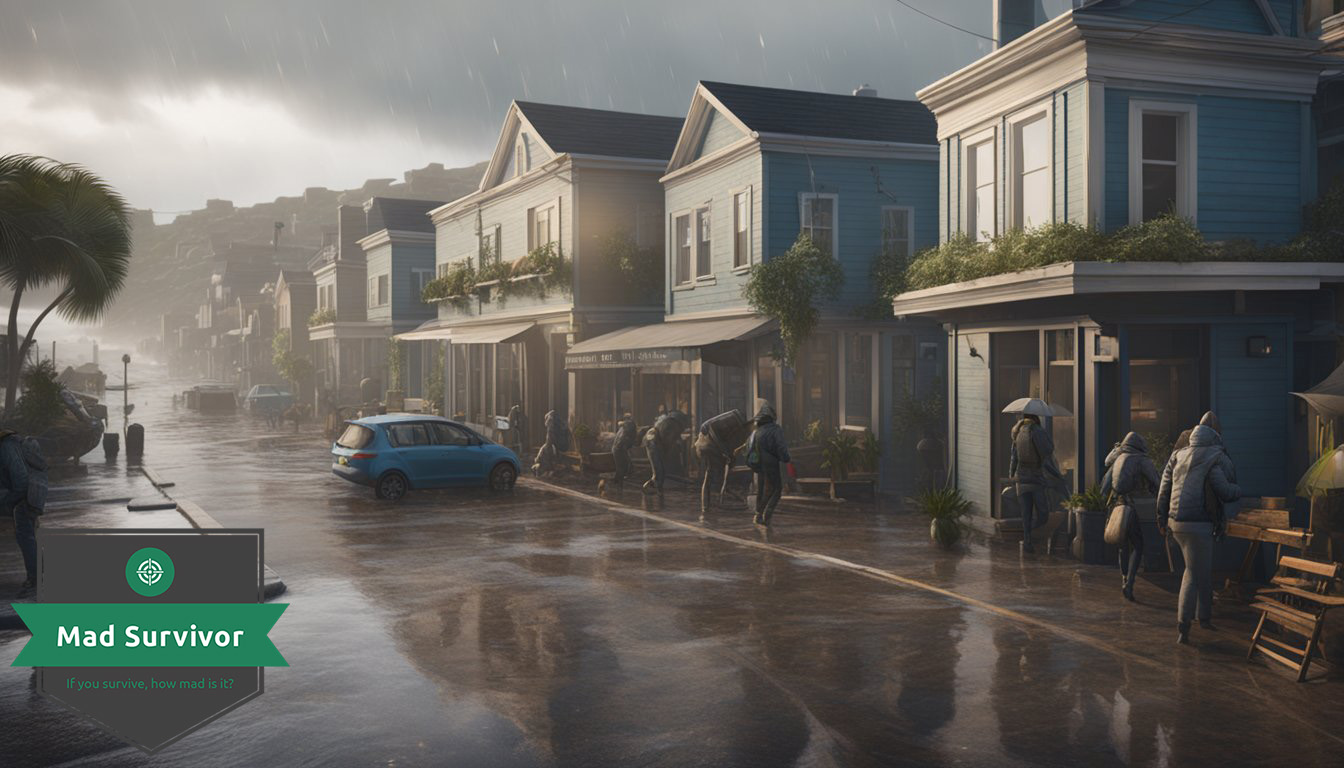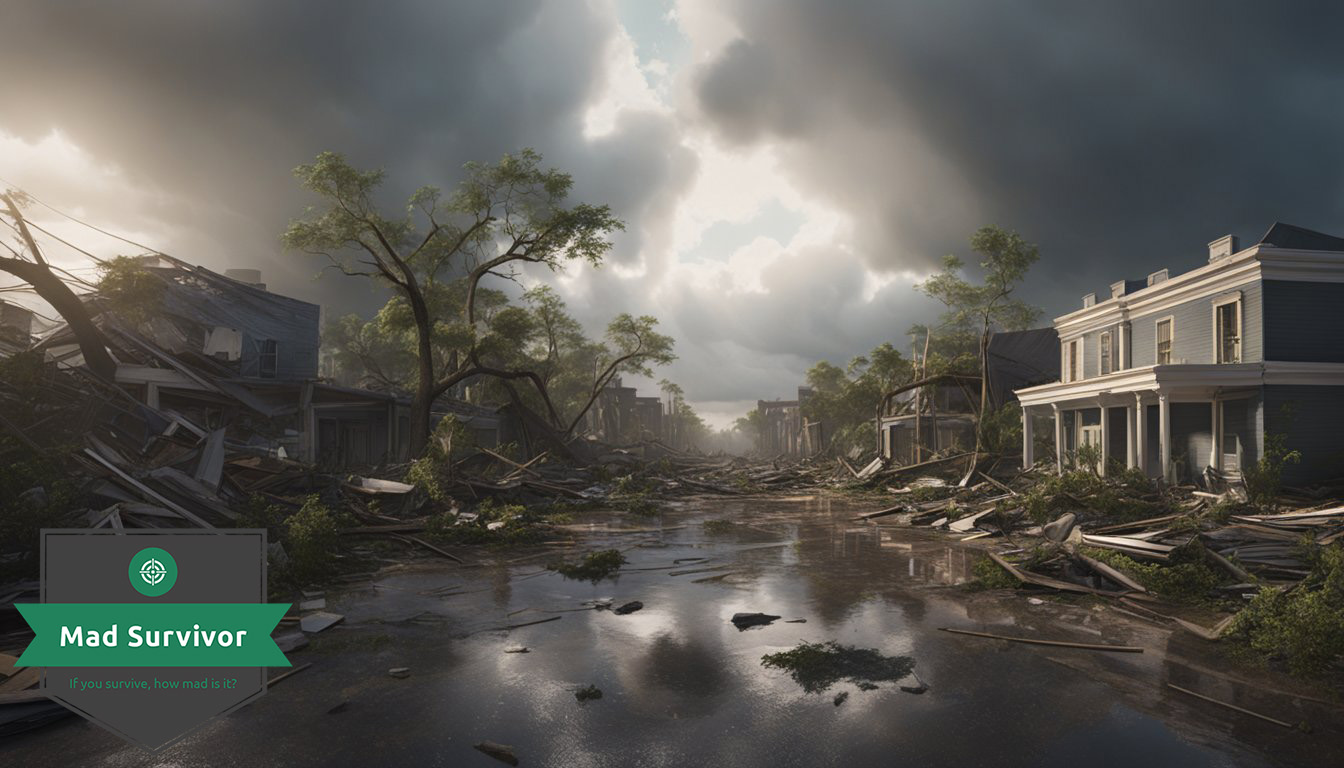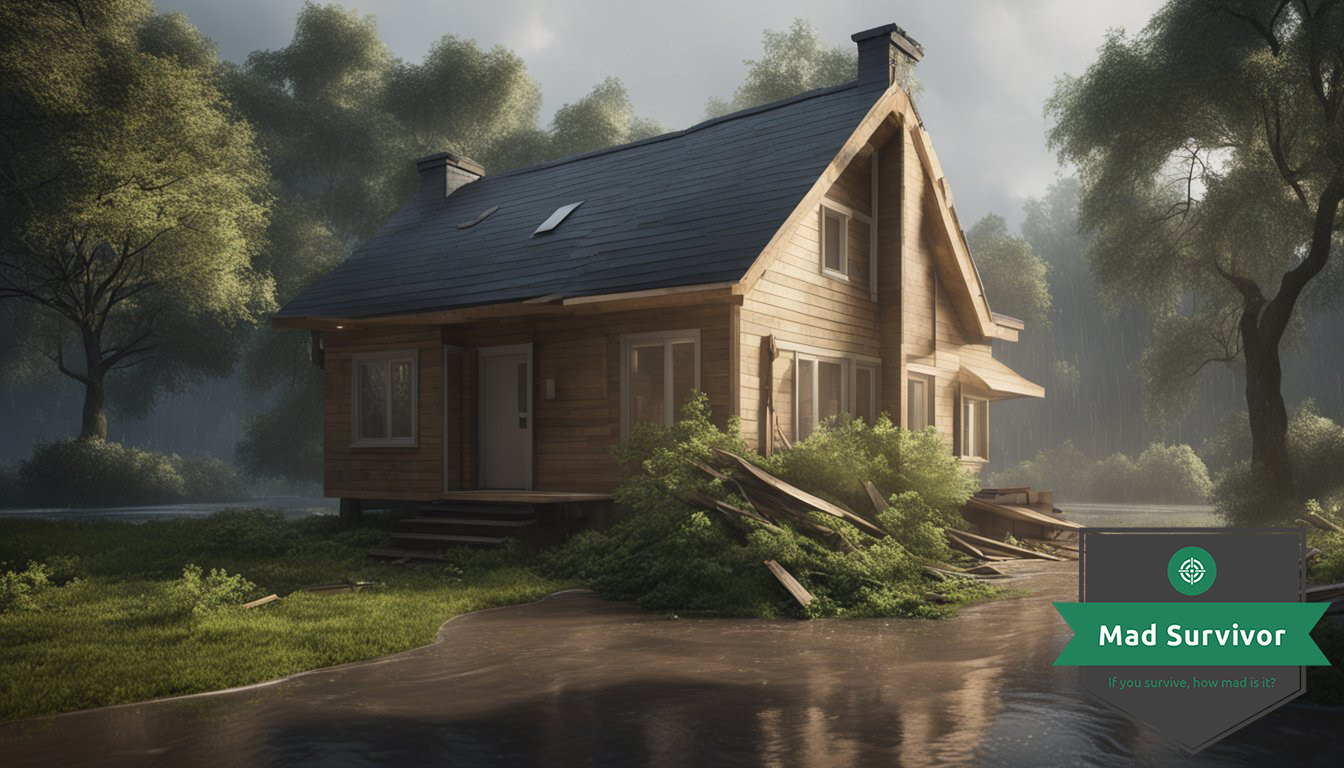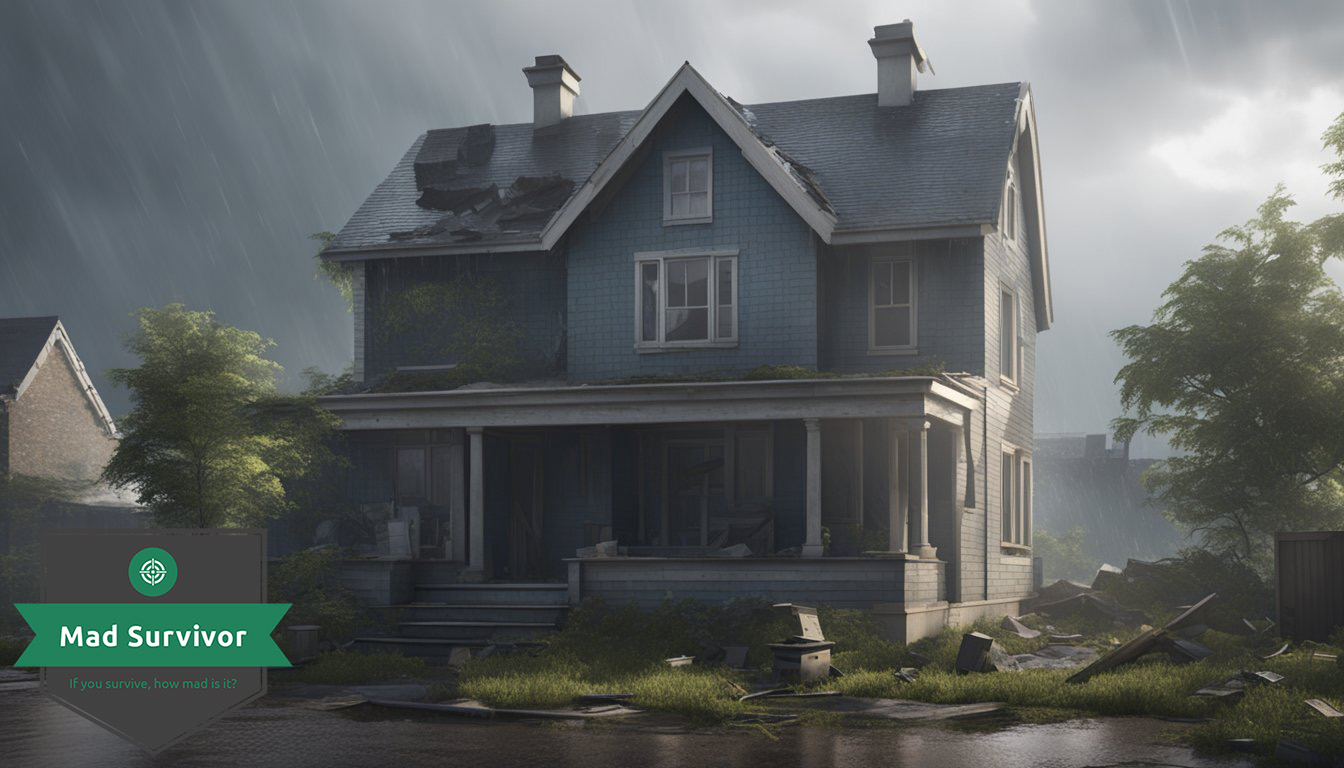
Hurricanes are among nature’s most powerful and destructive phenomena. If you live in areas prone to hurricanes, being prepared is important, especially during the hurricane season, which usually runs from June to November in the Atlantic region. Preparation involves knowing what supplies to have on hand, how to safeguard your home, and the steps to take if evacuation is necessary. This is where your skills as a prepper can come into play. Creating an emergency kit with essentials such as non-perishable food, water, flashlights, and protective clothing should be part of your preparation routine well before a storm is forecasted.
Understanding the risk and having a plan are the cornerstones of hurricane preparedness. Stay informed about the current forecast and familiarize yourself with the names and potential impacts of approaching storms. Securing your property by installing storm shutters or boarding up windows, and removing any loose items from your yard that could become projectiles, can minimize damage. Finalizing an evacuation plan that includes a safe destination and a route is essential; this should also consider any pets or additional needs of the family.
In the midst of a hurricane, you may not be able to leave your house. Identify a safe space in your home, such as a storm cellar or an interior room without windows, where you can wait out the storm. It’s also wise to keep abreast of weather updates and emergency instructions from local authorities. After the hurricane, caution is still necessary due to the potential for flooding, downed power lines, and structural damage. Prioritize reaching out to emergency services if you are in immediate danger, and contact your insurance company for guidance on property claims. Remember, prior planning and calm decision-making are vital for weathering the storm safely.
Join us as we break down how to survive a hurricane in the sections below:
Jump To Section
- Understanding Hurricanes
- Pre-Hurricane Preparedness
- During a Hurricane
- Evacuation Procedures
- After the Hurricane
- Special Considerations
- Avoiding Common Mistakes
Understanding Hurricanes

When you’re preparing for extreme weather, it’s essential to know what you’re up against. Understanding how hurricanes form, their types, and the naming conventions can help you stay informed and ready.
Hurricane Formation
Hurricanes start as tropical disturbances in warm ocean waters with surface temperatures of at least 26°C (79°F). These systems of low atmospheric pressure gather heat and energy from the water, leading to the formation of tropical storms when wind speeds reach 39 to 73 mph. If a storm’s winds continue to build and reach speeds of 74 mph or higher, it’s classified as a hurricane. The process involves a combination of warm water, wind patterns, and atmospheric conditions that can combine to create these powerful storms.
Types of Hurricanes
The severity of hurricanes is categorized by the Saffir-Simpson Hurricane Wind Scale:
- Category 1: Wind speeds 74-95 mph (Minor damage)
- Category 2: Wind speeds 96-110 mph (Moderate damage)
- Category 3: Wind speeds 111-129 mph (Devastating damage)
- Category 4: Wind speeds 130-156 mph (Catastrophic damage)
- Category 5: Wind speeds greater than 156 mph (Incredible damage)
Categories 3 and above are considered major hurricanes due to their potential to cause significant loss of life and damage. The storm surge – an abnormal rise of water generated by a storm’s winds – can be especially destructive, often causing the most damage and loss of life during a hurricane.
Hurricane Names
Hurricanes are named by the World Meteorological Organization to simplify communication and reduce confusion. Once a tropical storm’s winds reach 39 mph, it is given a name from an alphabetical list that is rotated every six years. If a hurricane is particularly deadly or costly, its name is retired out of respect and to avoid future confusion.
Pre-Hurricane Preparedness

As hurricane season approaches, you should already have plan in place. Your family’s safety depends on the preparations you make well before a hurricane is on the horizon.
Creating Your Disaster Plan
Start by writing a family disaster plan. Discuss and decide on a safe room or a meeting spot in case of separation. Make sure every family member knows emergency numbers and has a copy accessible. Determine an out-of-town contact everyone can check in with.
Emergency Supplies Checklist
Your emergency kit should at least include the following essentials:
- Water: 1 gallon per person per day for at least three days
- Non-perishable food: A three-day supply for each family member
- Battery-powered or hand-crank radio and a NOAA Weather Radio
- Flashlight and extra batteries
- First aid kit
- 7-day supply of prescription medications
- Personal hygiene items
- Copies of personal documents (ID, insurance policies, bank records)
- Cash
- Emergency blanket
- Maps of the area
Securing Your Property
Take steps to secure your home:
- Install shutters or plywood over windows to protect against flying debris.
- Clear loose and clogged rain gutters to prevent water damage.
- If advised, turn off utilities and set your refrigerator and freezer to the coldest setting to keep food fresh longer if the power goes out.
Insurance and Documentation
Review your insurance policies to ensure they’re current and cover common hurricane damages. Take photos of your home and belongings for documentation. Keep these records in a safe deposit box or with a trusted out-of-state relative. Consider getting a generator for alternate power if you live in an area with frequent hurricanes.
During a Hurricane

In this critical period, your safety hinges on being well-prepared and aware of your immediate environment. Adhere to the following guidelines and ensure you have your emergency kit at hand.
Safety Measures
- Stay informed: Consistently monitor storm updates via a battery-powered or hand-crank portable radio.
- Avoid windows: Keep clear from windows and seek shelter in an interior room for protection against high winds.
- Handle Generators with care: If using a generator, keep it outside and away from windows to prevent carbon monoxide poisoning.
If You’re Indoors
- Locate a safe spot: An interior room, closet, or hallway on the lowest level is your safest bet.
- Protect yourself: Use mattresses, pillows, or blankets as shields from potential debris if you’re in a place without shutters or if windows break.
If You’re Outdoors
- Find immediate shelter: Locate a nearby building, ideally a community shelter that is designed for storm protection.
- Stay away from floodwaters: They can be deeper than they seem and may contain dangerous debris or be electrically charged from downed power lines.
- Do not attempt to drive: Vehicles can be swept away or destroyed in flooding conditions. If you’re caught on the road, evacuate to higher ground if possible.
Evacuation Procedures

Be familiar with evacuation procedures to ensure you and your family’s safety. Know when to evacuate, the routes to take, and what to do if you cannot leave.
When To Evacuate
You must evacuate when an evacuation order is issued for your area. Local authorities will provide specific guidance, but it’s wise to leave early if you’re in a low-lying area prone to flooding. Leaving early can also help avoid potential traffic congestion and trouble leaving the area that is in danger. Keep a battery-powered radio or a smartphone app handy to receive updates on the storm’s progression and instructions from emergency services.
Evacuation Routes
Learn the evacuation routes from your local government well in advance. They’re typically established away from the expected path of the hurricane. Make sure to keep a physical map in your car, as digital navigation systems may fail during severe weather. If you have a car, ensure it’s fueled and ready to leave at a moment’s notice. Place your emergency supplies kit in your vehicle, so it’s packed when you get the evacuation order.
If You Cannot Evacuate
If you cannot evacuate, identify a safe room in your home — a space without windows, preferably an interior room or a hallway on the lowest level. Follow up by checking nearby shelters, and understand the evacuation routes to those shelters if the situation changes. If trapped in your home, make sure to have an emergency kit that includes water, non-perishable food, flashlights, and a first aid kit. Keep your emergency contact list readily accessible.
After the Hurricane

Once the storm has passed, your safety and recovery are the primary concerns. It’s important to assess damages, uphold health and hygiene standards, and know how to seek assistance.
Assess and Repair
After ensuring it’s safe to return, promptly assess your property for storm damage. Be cautious of potential hazards like downed power lines or structural damage.
- Exterior: Check for any visible structural damage before entering.
- Interior: Look for signs of water intrusion, which could lead to mold.
Contact your insurance company to report any damage. If you have made temporary repairs, such as boarding up windows, keep receipts as they might be reimbursable.
Health and Hygiene
Due to potential power outages, you may be without running water. Use bottled water or boil tap water before consumption. For personal hygiene, alcohol-based sanitizers can be a temporary substitute if soap and water are unavailable.
- Avoid contact with flood waters; they may contain harmful contaminants.
- Prevent mold growth by drying out flooded areas promptly.
Reaching Out for Help
Inform family, friends, and local authorities about your status. If you need help, contact local disaster recovery services. In cases of prolonged power outages or other critical service failures, local support groups can provide vital resources and information.
- Local Authorities: They can offer updates on public safety and services.
- Community Support: Local organizations often provide aid to affected individuals.
Special Considerations

Make sure to address specific needs for your pets, children, and family members with medical concerns. Ensure your plans are inclusive and cover all bases to ensure everyone’s safety.
Caring for Pets
Pets rely on you for their safety, so it’s important to incorporate their needs into your hurricane preparedness plan. Here are some specific steps you can take:
- Identification: Ensure your pets have ID tags with up-to-date contact information.
- Shelter: Identify pet-friendly shelters or accommodations in advance.
- Supplies List:
- Food and water for at least three days
- Medications and medical records in a waterproof container
- Carry cage or crate for transportation
- Sanitation needs such as litter or plastic bags
Preparation for Families with Children
Children need reassurance and routine to help them cope with the stress of a hurricane. Here’s how you can prepare:
- Educate: Explain the importance of hurricane safety to children in a calm manner.
- Emergency Contacts: Teach them how and when to call emergency services.
- Supplies Kit:
- Favorite toys, books, and games to keep them comfortable and occupied
- Child-specific food and drinks that are non-perishable
- Baby supplies if needed (formula, diapers, wipes, etc.)
Addressing Medical Needs
If you or a family member have specific medical requirements, advance preparation is vital. Here’s what to prioritize:
- Medication: Store at least a week’s supply of all prescribed medications.
- First Aid Kit: Keep a well-equipped first aid kit that includes items such as bandages, antiseptics, a thermometer, and any personal medical devices.
- Power Dependency: If you rely on electrically powered medical equipment, arrange for a backup power source.
- Documents: Keep copies of health insurance and medical records in a waterproof container easily accessible.
Avoiding Common Mistakes

Avoiding common errors can significantly increase your chances of safety and property preservation.
Preparation Mistakes
One key aspect of preparation is creating an emergency kit. A common mistake is not including enough non-perishable food and water for at least three days. Your kit should also have flashlights and a first aid kit, as reliance on candles can be a fire hazard.
Another oversight is not keeping important documents and valuables in a waterproof container. These items can become irreplaceable in the event of a disaster.
Evacuation Mistakes
If evacuation is necessary, waiting too long to leave can be a major mistake. Verify your evacuation routes ahead of time and maintain a full tank of gas. Remember, roads may become congested as the storm approaches.
- Evacuation Essentials:
- Pre-planned routes
- A full tank of gas
- A bag with personal essentials
Home Protection Mistakes
Protecting your home involves more than just boarding up windows. Do not forget to secure any outdoor items that can become airborne hazards. Use sturdy boards to cover glass and remove any dead tree branches that might fall on your house.
- Home Protection Checklist:
- Plywood boards for windows
- Trimmed trees
- Anchored outdoor objects
Also, people often think that taping windows can prevent breakage. However, it does not. Use proper boarding techniques for effective home protection during the storm.

Leave a Reply